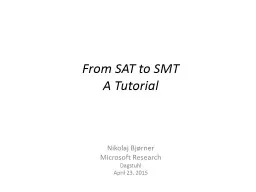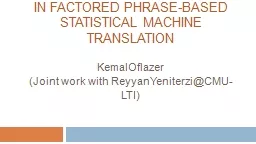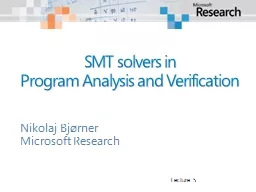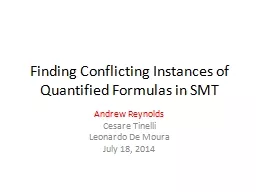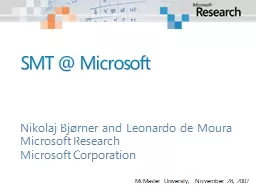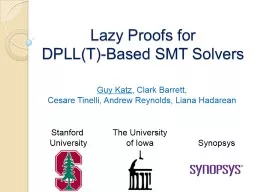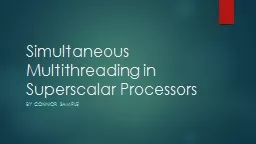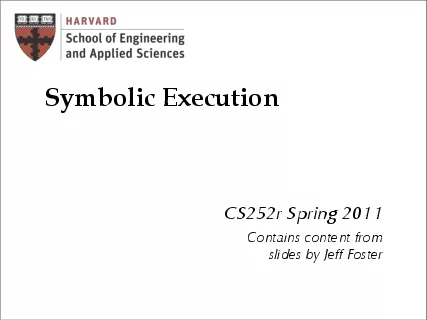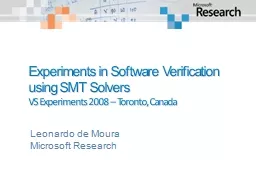PPT-From SAT to SMT
Author : tawny-fly | Published Date : 2017-06-19
A Tutorial Nikolaj Bjørner Microsoft Research Dagstuhl April 23 2015 Plan SMT in a nutshell SMT solving walkthrough by example Selected Theory solvers Equalities
Presentation Embed Code
Download Presentation
Download Presentation The PPT/PDF document "From SAT to SMT" is the property of its rightful owner. Permission is granted to download and print the materials on this website for personal, non-commercial use only, and to display it on your personal computer provided you do not modify the materials and that you retain all copyright notices contained in the materials. By downloading content from our website, you accept the terms of this agreement.
From SAT to SMT: Transcript
Download Rules Of Document
"From SAT to SMT"The content belongs to its owner. You may download and print it for personal use, without modification, and keep all copyright notices. By downloading, you agree to these terms.
Related Documents

